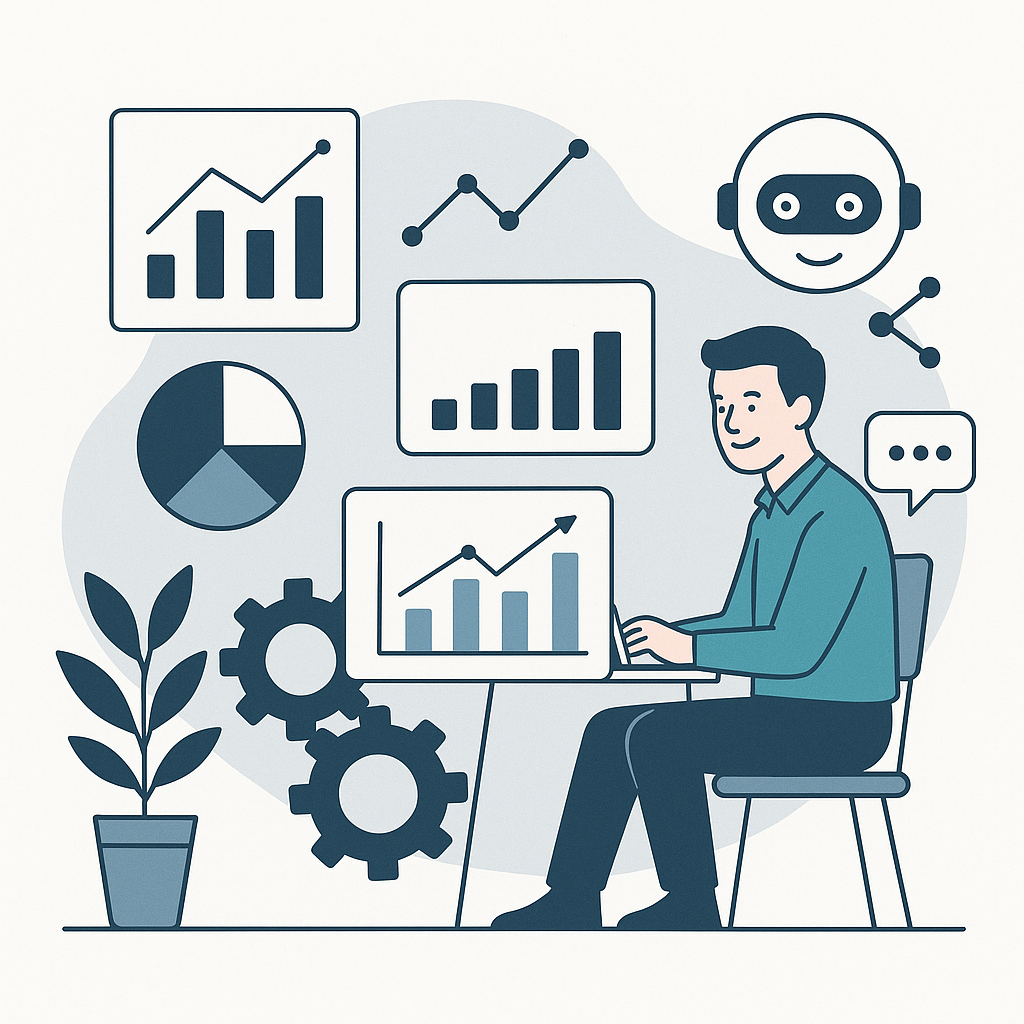
Business Intelligence (BI) dashboards and tools have become established in businesses. They give visibility on sales, finance or logistics, and facilitate reporting. However, behind each dashboard, there is always a analyst work : prepare data, build indicators, explore trends and make recommendations. This work is essential but also time consuming. This is precisely where theartificial intelligence intervenes: not to replace the analyst, but for theassist. AI takes care of repetitive and technical tasks, so that humans can focus on interpretation and decision making.
Every analyst starts with clean your data : remove duplicates, correct inconsistent formats, fill in missing values. This is an essential step, but it can represent up to 70% of your time. With AI, this preparation is accelerated. The models automatically detect anomalies, harmonize dates, currencies, or categories, and identify areas of doubt. Of course, the analyst keeps control: he is the one who validates the corrections or chooses to integrate external data (APIs, benchmarks, market data).
👉 Complementarity : AI automates detection and correction, the analyst decides the rules and stays in control.
Once the data is ready, the analyst builds indicators to monitor performance: comparison of objectives with achieved, multi-period monitoring (M-1, YTD, N-1), internal and external benchmarks. AI enriches this work by making the KPIs more dynamic. It helps to select the most relevant indicators according to the sector, quickly identifies significant differences and generates automatic reports for different profiles (management, operational teams).
👉 Complementarity : the analyst chooses the right strategic indicators, AI assists him by highlighting deviations and automating the formatting of reports.
The key role of the analyst is to explore data to learn from it. This involves analyzing trends, detecting anomalies or looking for correlations (for example between weather and demand, or between prices and sales). AI makes that exploration faster and richer. It identifies weak signals or unexpected relationships between variables, which humans can then interpret.
👉 Complementarity : AI highlights patterns, but it is the analyst who judges their relevance and translates them into lessons for the company.
Advanced analyses consist in testing hypotheses and projecting the future: sales forecasts, “what-if” scenarios (rising costs, price variations), customer segmentation, and even simplified A/B testing. Traditionally, these exercises required time and advanced statistical skills. AI democratizes this access: it offers projections or simulations that can be quickly used. But the analyst still has a crucial role: choosing the hypotheses to be tested, challenging the results and linking the projections to business challenges.
👉 Complementarity : the AI calculates and simulates, the analyst selects the right scenarios and translates them into strategic decisions.
The work of the analyst does not end with analysis: he must explain its results and convince its interlocutors. Reports, presentations, summary notes... all this takes time and requires communication skills. AI helps by automatically generating summaries in natural language, making recommendations, or sending intelligent alerts when a threshold is crossed. It can even offer a “chat” interface allowing questions to be asked directly to the data. But again, the analyst remains essential to adjust the message to the audience and to give business meaning.
👉 Complementarity : AI produces a first layer of story, the analyst refines and contextualizes to make the message convincing.
Prepare, monitor, explore, anticipate, communicate: these five steps describe the daily life of an analyst. AI is not intended to replace this role, but tomagnify. It automates tedious tasks, detects weak signals more quickly, and generates accessible scenarios. The analyst retains the key role: asking the right questions, interpreting the results, and deciding what action to take. In this sense, AI is not a competitor but a Co-pilot. It plays the role of the assistant who provides reliability and enlightenment, while the human being keeps the wheel of the decision.